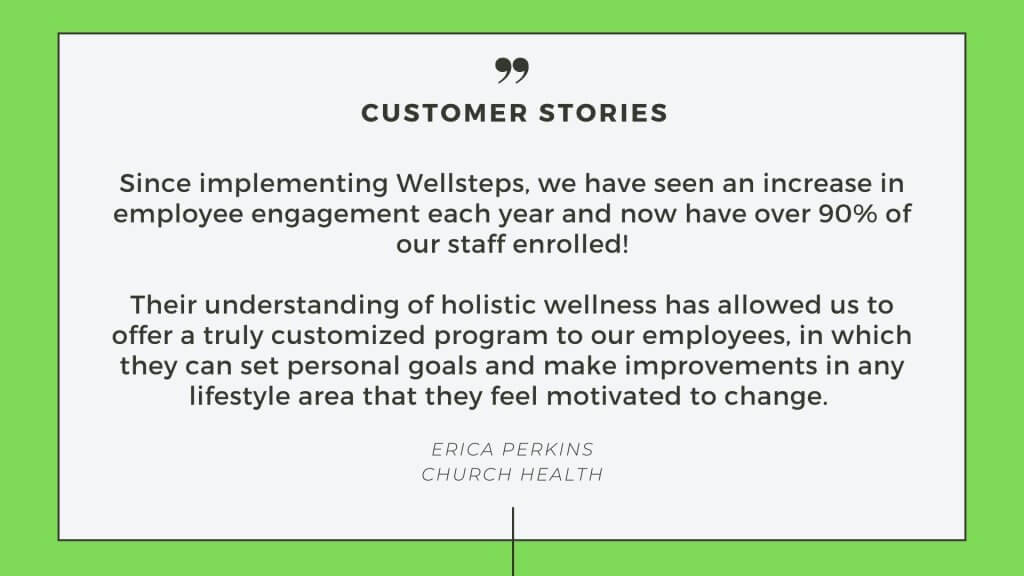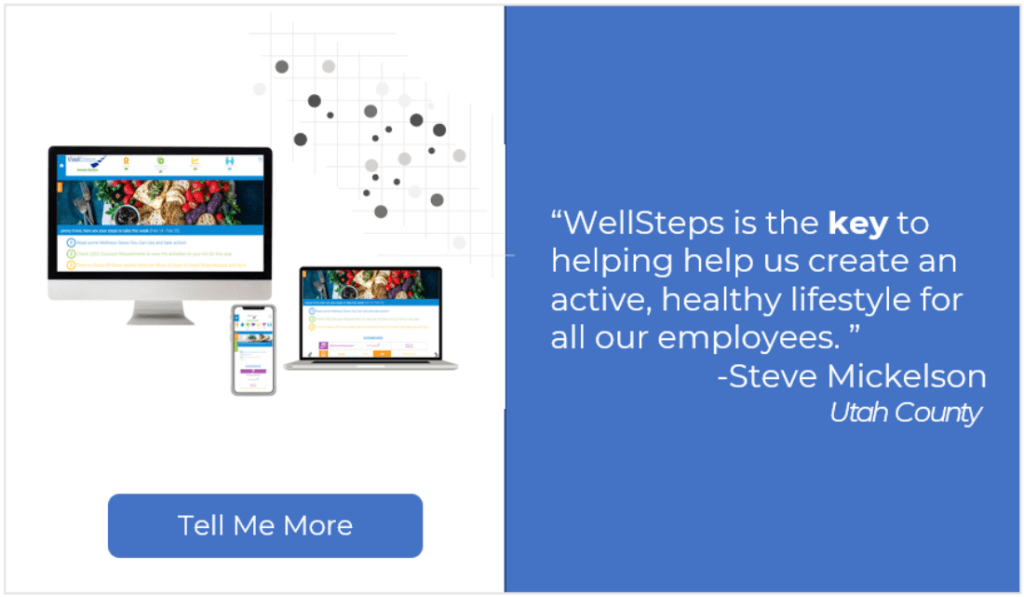The success of any business depends on several factors, among which are the performance and productivity of engaged employees. Business owners and executives play a huge role in ensuring that employees remain productive. Now, how is this achieved? This is where employee wellness programs come in.
Executives must work hard to keep their staff happy and motivated, pushing them to continue giving their best in everything they do and stay engaged with the company and their colleagues. Employee wellness programs not only create healthy and happy employees, but engaged ones, too. When employee well-being is taken care of, it heartens the fabric of the company: its people.
Engaged employees tend to be more immersed in their roles and company because they are happy with their overall work situation, not just because of mere obligation. Such level of employee engagement eventually results in a more solid and stronger business. By providing your employees with wellness programs that promote engagement, you can maximize their potential.
RELATED: Why Are Happy Employees More Productive in the Workplace?
What Is an Engaged Employee
What exactly is the meaning of an engaged employee? How can you tell if a worker is engaged in his or her job and how does engagement fit in the whole organization?
Engaged employees are those who feel deeply involved in their work, giving it their attention and dedication without the need to force them. They are mentally, physically, and emotionally invested in their work. Engaged employees are a great company asset—they make things happen and help steer the company towards its goals.
Engaged employees are a great company asset—they make things happen and help steer the company towards its goals.

On the contrary, a disengaged employee sees work simply as a compliance, an obligation to fulfill. The attitude is marked with indifference, sluggishness, and mediocrity. Disengaged employees simply go through the motions, without desire to go the extra mile.
Characteristics of an engaged employee include:
- have a higher-than-average level of dedication and enthusiasm towards their job
- their attitude is upbeat
- they feel valued by the company
- they feel energized to render quality work
- alert and attentive
- excited to tackle challenges
- quick to adapt to new situations
RELATED: 10 Effective Ways to Motivate Employees in the Workplace
Reasons Why Employees Usually Lose Focus
There are various reasons why employees become less engaged in their work. A lack of support from the company to meet their physical, mental, and emotional needs brings about loss of interest and focus. Employees who feel overwhelmed with work demands, feel unappreciated, are burdened by health issues, or do not see career growth opportunities where they are, tend to drift away from the company, maybe not swiftly but gradually.

Furthermore, employees lose their focus when they are distracted by worries and concerns that are not addressed. This can range from health issues to professional stagnation. When they are weighed down by concerns and they feel helpless about it, they tend to lose their focus and eventually, their drive.
RELATED: 10 Tips to Implement Mindfulness in the Workplace
How Does a Good Wellness Program Keep Employees Engaged
Employee engagement is linked to higher productivity, making it a crucial concept in human resource management. There is a cost hidden behind employees who come to work but are too disengaged to make meaningful contributions.
When focus is lost, work efficiency suffers. Off-focused employees usually turn in mediocre work. It takes longer for them to finish a job, and they render sub-par outputs. They also have a hard time following instructions, making adjustments where necessary, and reaching set targets.
To help employees escape the rut they’re in, it’s imperative to:
- address their needs
- promote their well-being
- provide them with a space where they can feel valued and thrive
A wellness program must take a holistic approach, taking into account every aspect of someone’s being—mind, body, and spirit. Focusing on one aspect only while ignoring others will not be effective and sustainable.
You see, wellness encompasses the core needs of the employee in the workplace including, but not limited to, monetary remuneration. It involves their physical, mental, and emotional health. Economic satisfaction in the workplace through high salary and bonuses does not always translate to a good well-being, especially if the employees’ physical and mental health are suffering due to work fatigue and impossible demands.
The company needs to cultivate a space that promotes employees’ personal and professional needs. This can be achieved through wellness programs.

For a wellness program to be successful at making employees more engaged, it has to be interesting, sustainable, meaningful, and measurable. Furthermore, it should effectively convey the message that the company cares for its employees and appreciates their contribution to its growth.
For a wellness program to be successful at making employees more engaged, it has to be interesting, sustainable, meaningful, and measurable.
Still wondering whether wellness programs are worth the investment? Here are wellness program payoffs that lead to more engaged employees in the workplace.
1. Reduces Stress
While a healthy dose of stress that can keep employees alert and active is good, being constantly overworked and subjected to tension is not. A stressful, toxic work environment eats away at employees’ well-being. When employees can no longer handle the pressure, they tend to lose focus, cave in, withdraw, or eventually quit.
That sense of disquiet inside them resulting from exposure to more pressure than they can handle can turn into an internal turmoil. When this is not addressed, conflict within themselves can drown them and make them feel weary and helpless. Employees do not usually speak about their escalating stress level during the early stages, but it eventually manifests in the form of absenteeism, presenteeism, low productivity, and poor performance.
A good wellness program needs to provide a space where employees can breathe, take a break, and find their balance so they can recharge, not taking in more than what they are built to handle. Activities like the following can help de-stress employees and make work more fun and relaxing.
- stress management
- anxiety coaching
- yoga and meditation classes
- art classes
- recreation activities
- informal one-on-one talks with the boss
- team leisure walks
- team building activities
These can lessen the weight on their shoulders and provide relief knowing that their team has their back.

Resolving Conflict Reduces Stress
It is also important to resolve any conflicts among employees or with bosses because carrying an emotional strain makes the journey heavy and unpleasant. Providing a flexible work schedule to employees can also help them better manage the pressures of work life. It enables a good flow of work that can result in more engaged employees.
When stress is minimized, it gives the employee a chance to think more clearly and focus on getting things done the right way.
Maintaining a clean and safe work environment is also important because clutter and hazards in the workplace can add to employee stress. Clearing out both physical and mental spaces allows room for serenity and a sense of clarity. When stress is minimized, it gives the employee a chance to think more clearly and focus on getting things done the right way.
RELATED: 6 Strategies for Successful Wellness with Remote Workers 2023 UPDATED
2. Boosts Morale
Employee morale is a person’s general feeling of confidence and satisfaction towards their job. Employees with high morale are more involved in their work, wanting to contribute to projects and see them through to completion.
Employee morale is linked to work performance. It’s easy to spot an employee with a dipping morale because it often translates to a decline in productivity and work quality. The causes of low employee morale are concerns that negatively affect their well-being like stress at work, unrecognized efforts, lack of career advancement, health problems, or lack of learning opportunities like training and exposure.
It’s easy to spot an employee with a dipping morale because it often translates to a decline in productivity and work quality.
When employees feel limited and underappreciated, it reduces their enthusiasm and desire to engage in activities and projects in the workplace. They become less immersed in their work, become passive, and unable to make initiatives.
Disengaged employees also rarely communicate, are unresponsive to calls to participate, and are not interested to know about what their bosses think about their work. They don’t ask for feedback because they are no longer eager to play an active part in achieving goals. They simply submit work for the sake of compliance and to avoid getting memos.

Low employee morale can be improved by:
- recognizing good work
- providing rewards and bonuses
- giving opportunities to enhance their skills
- career coaching
- mentoring
- shadowing
- training
- offering scholarship for further studies
It’s also best to help employees assess their skills and see how these are aligned with their career goals and life aspirations in general. A clear perspective and career guidance can help lift employees from a state of low morale and give them a good push.
RELATED: How Wellness Programs Help Improve Employee Morale
3. Increases Productivity
Wellness programs create a positive and encouraging atmosphere in the company that can stir employees to join the action. Healthy, happy employees become motivated to work well, resulting in improved and sustained productivity. The company gains and everyone wins.

When their colleagues are doing well and are being rewarded for it, less engaged employees may feel inspired to do their part and enjoy the fruits of their labor. A good rewards and incentive program that further pushes employees to do their best can foster a culture of excellence and create a team of learners, doers, and masters in the company.
Furthermore, increased productivity impacts the bottom line and when the company builds more wealth, the gains should trickle down to employees to reinforce their motivation, helping sustain and efurther improve their productivity level.
Increased productivity impacts the bottom line and when the company builds more wealth, the gains should trickle down to employees.
This way, goals are set higher, employees understand their role in the company’s success, the company rewards and reinforces their motivation, and the healthy cycle goes on.
RELATED: The Correlation Between Wellness Programs and Increasing Productivity in the Workplace
4. Reduces Illness
Wellness programs that support employee’s health, such as conducting fitness training in the onsite gym, providing healthy snack and lunch options in the cafeteria, and facilitating smoking cessation and weight management programs, among other health and fitness activities, can help reduce illness and health risks among employees.
Why is this important? Your employees may want to direct their energy and attention to their work but when health issues get in the way, productivity gets hit. Being unwell limits their work capacity and reduces their degree of engagement in the workplace. Frequent sick leaves make them unable to submit their deliverables on time, causing backlogs that can further add to their stress.
Healthy employees, on the other hand, are:
- more deeply engaged in their work
- inspired to perform better
- further motivated by the result of a job well done
- not limited by sickness and weakness
- energized and strengthened enough to even go the extra mile at work
How Does Having Engaged Employees Improve the Workplace
Having engaged employees makes the workplace more vibrant and dynamic. It creates an atmosphere where there is a good flow of energy, ideas, and positive attitude. When employees are invested in their work, a culture of excellence is fostered because everyone wants their work to have an impact.
Overall, there will be a sense of accomplishment and healthy competition where everyone is inspired to do their best to be at par with the rest. On the contrary, when there are less engaged employees in a company, stagnation takes over, productivity goes down, and quality of work suffers.
Having a wellness program strengthens and reinvigorates the employees’ spirit and drive to work because they are supported to become healthier, inspired, and empowered in the workplace.
Having a wellness program strengthens and reinvigorates the employees’ spirit and drive to work because they are supported to become healthier, inspired, and empowered in the workplace.
RELATED: 7 Simple Strategies to Integrate Health and Wellness Programs in the Workplace
Next Steps
Want to see all of these benefits and more with your engaged employees? Schedule a free demo with our team and discover how a wellness program, guided by WellSteps, can do just that.
